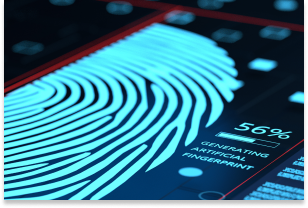- Want to extend your iPhone battery life? Stop making this common mistake
- Tj-actions Supply Chain Attack Traced Back to GitHub Token Compromise
- I changed 10 Samsung phone settings to drastically improve the user experience
- 9 principles to improve IT supplier relationship management
- A look back at Microsoft’s IPO
What Is Synthetic Identity Theft? | McAfee Blog

It’s too bad cybercriminals don’t funnel their creativity into productive pursuits because they’re constantly coming up with nefarious new ways to eke out money and information from unsuspecting people. One of their newest schemes is called synthetic identity theft, a type of identity theft that can happen to anyone. Luckily, there are ways to lower the chance of it happening to you. And if it does happen to you, there are a few preventive measures you can take. Plus when you’re able to identify the early signs, you can minimize its damage to your finances and your credit.
Here’s everything you need to know about synthetic identity theft in order to keep your and your family’s information safe.
What Is Synthetic Identity Theft?
Synthetic identity theft occurs when a cybercriminal steals a real Social Security Number (SSN) but fabricates the rest of the details that are associated with that SSN, such as the full name and birthdate. With this valid SSN, they’re able to create an entirely new identity and use it to take out loans, apply for credit cards, or even purchase a house.
This form of identity theft is more difficult than traditional identity theft to detect. When a criminal steals someone’s entire identity – their name, birthdate, address, and SSN – there are more flags that could raise the alarm that something is amiss. Additionally, in some cases of synthetic identity theft, cybercriminals play the long game, meaning that they build up excellent credit with their new fake identity for months or even years. Then, once they’ve squeezed as much as they can from that great credit, they rack up huge charges against that credit and flee. It is only then when creditors demand payment that the rightful owner of the SSN finds out their identity was compromised.
Synthetic identity theft can severely damage the credit or finances of the person to whom the SSN truly belongs. It most often occurs to people who don’t closely monitor their credit, such as children, people in jail, or the elderly, but it can happen to anyone.
Signs Your Identity May Be Stolen
The signs of synthetic identity theft are a bit different than the signs of regular identity theft. In traditional identity theft, you may receive bills to your address either with someone else’s name on them or for organizations with which you don’t have an account. However, in the case of synthetic identity theft, since the thief makes up an entirely new name and address, you’re unlikely to accidentally get their mail.
The major red flag is if your credit score is drastically lower (or higher) than you remember it being. Did you know that you can request one free credit report per year from each major credit bureau? Get in the habit of ordering reports regularly to keep tabs on your credit and confirm that there are no new accounts that you didn’t create.
How to Protect Your Identity
Check out these tips on how to protect your identity online to hopefully prevent it from ever happening to you:
- Never share your SSN. There is a very short list of organizations who require your SSN: the IRS, your bank, the Registry of Motor Vehicles, and your work’s payroll department. If anyone else requests your SSN, it’s not rude to inquire why they need it. In cases where you do have to share your SSN, never do so over electronic correspondences. Either visit the organization in person or call them in a private location that is clear of eavesdroppers.
- Set up credit locks. If you aren’t planning to file for a credit card or take out a loan anytime soon, consider locking your credit. This is a process where you reach out to the major credit bureaus and notify them to deny any new claims or requests made against your name or SSN. Locking your credit is a great preventive measure that can guard against many criminal scenarios.
- Keep an eye on the news. Cybersecurity breaches of major companies occur with more frequency than we’d all like to see. One way to protect your identity is to watch the headlines to keep tabs on recent breaches. If a company with which you have an account is affected, take action immediately. This includes changing your password to your account and diligently tracking your bank statements for any signs that you may have been affected.
Identity Protection Provides Security, Peace of Mind
McAfee Identity Protection is a comprehensive identity monitoring service that protects your identity and privacy from the fastest-growing financial crimes in America. McAfee can scan risky websites to see if your information was leaked in a recent breach. Additionally, with the new security freeze feature, you can deny access to your credit report, which stops fraudsters from opening new credit cards or bank or utility accounts in your name. Finally, if the worst does happen, McAfee Identity Protection offers up to $1 million in identity theft coverage and restoration.
If you don’t do so already, commit to a routine of monitoring your credit and financial accounts. It only takes a few minutes every month. To fill in the gaps, trust McAfee!
!function(f,b,e,v,n,t,s)
{if(f.fbq)return;n=f.fbq=function(){n.callMethod?
n.callMethod.apply(n,arguments):n.queue.push(arguments)};
if(!f._fbq)f._fbq=n;n.push=n;n.loaded=!0;n.version=’2.0′;
n.queue=[];t=b.createElement(e);t.async=!0;
t.src=v;s=b.getElementsByTagName(e)[0];
s.parentNode.insertBefore(t,s)}(window, document,’script’,
‘https://connect.facebook.net/en_US/fbevents.js’);
fbq(‘init’, ‘448732493334171’);
fbq(‘track’, ‘PageView’);
!function(f,b,e,v,n,t,s)
{if(f.fbq)return;n=f.fbq=function(){n.callMethod?
n.callMethod.apply(n,arguments):n.queue.push(arguments)};
if(!f._fbq)f._fbq=n;n.push=n;n.loaded=!0;n.version=’2.0′;
n.queue=[];t=b.createElement(e);t.async=!0;
t.src=v;s=b.getElementsByTagName(e)[0];
s.parentNode.insertBefore(t,s)}(window, document,’script’,
‘https://connect.facebook.net/en_US/fbevents.js’);
fbq(‘init’, ‘187610925152304’);
fbq(‘track’, ‘PageView’);
// load Facebook
!function(f,b,e,v,n,t,s){if(f.fbq)return;n=f.fbq=function(){n.callMethod?
n.callMethod.apply(n,arguments):n.queue.push(arguments)};if(!f._fbq)f._fbq=n;
n.push=n;n.loaded=!0;n.version=’2.0′;n.queue=[];t=b.createElement(e);t.async=!0;
t.src=v;s=b.getElementsByTagName(e)[0];s.parentNode.insertBefore(t,s)}(window,
document,’script’,’https://connect.facebook.net/en_US/fbevents.js’);
fbq(‘init’, ‘766537420057144’);
fbq(‘track’, “PageView”);
//document.write(‘x3Cnoscript>x3Cimg height=”1″ width=”1″ style=”display:none” src=”https://www.facebook.com/tr?id=766537420057144&ev=PageView&noscript=1″ />x3C/noscript>’);

